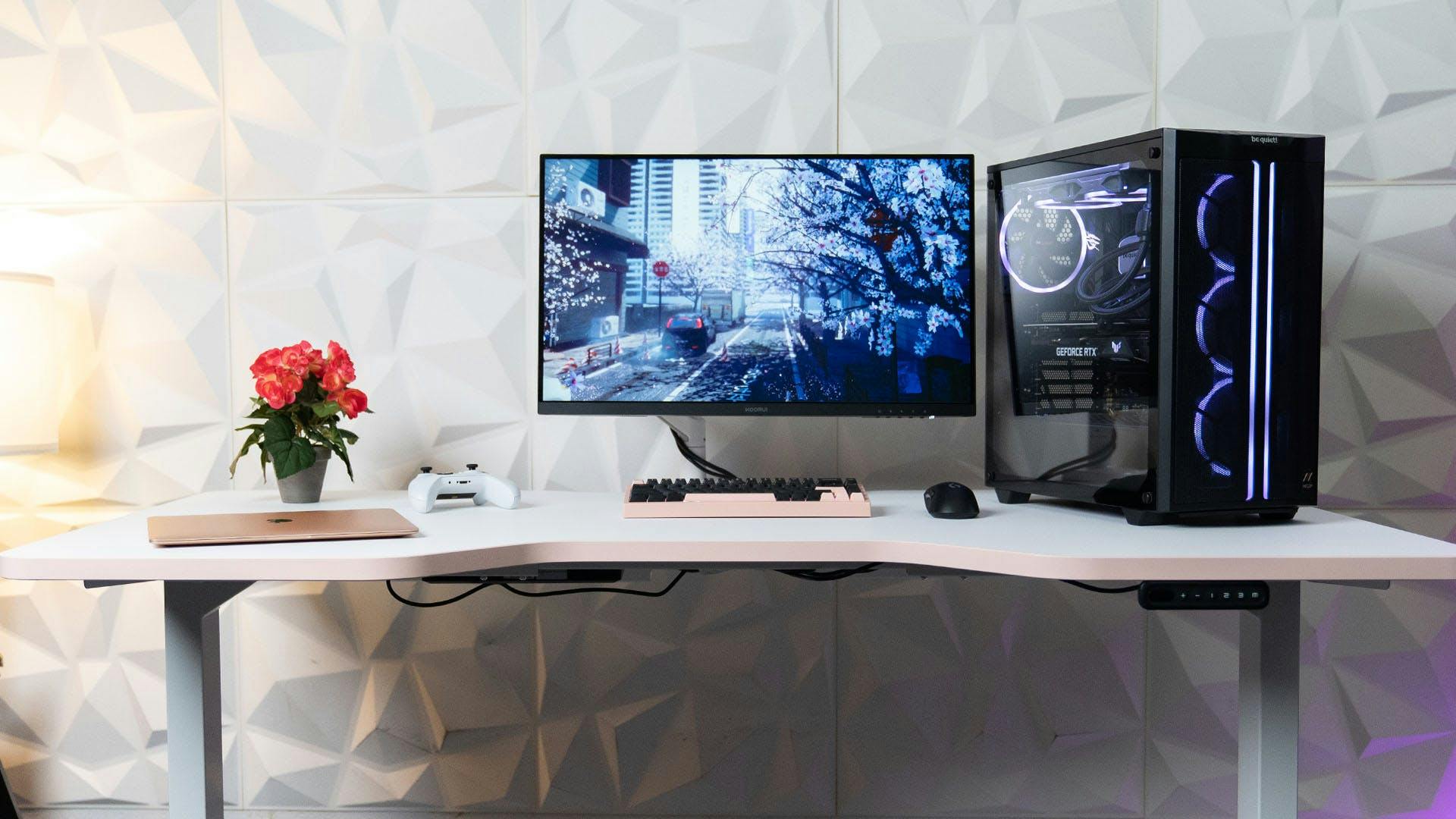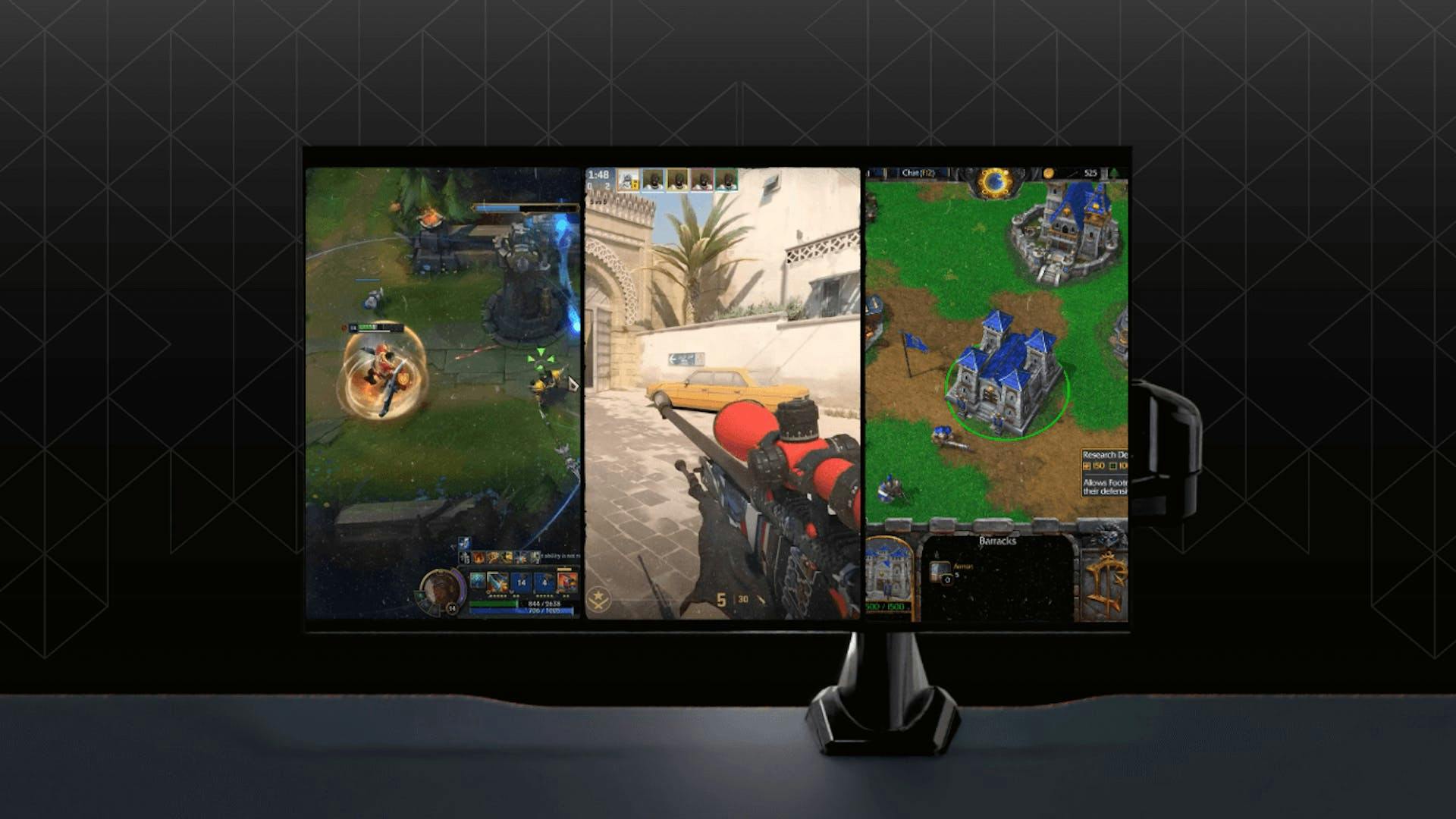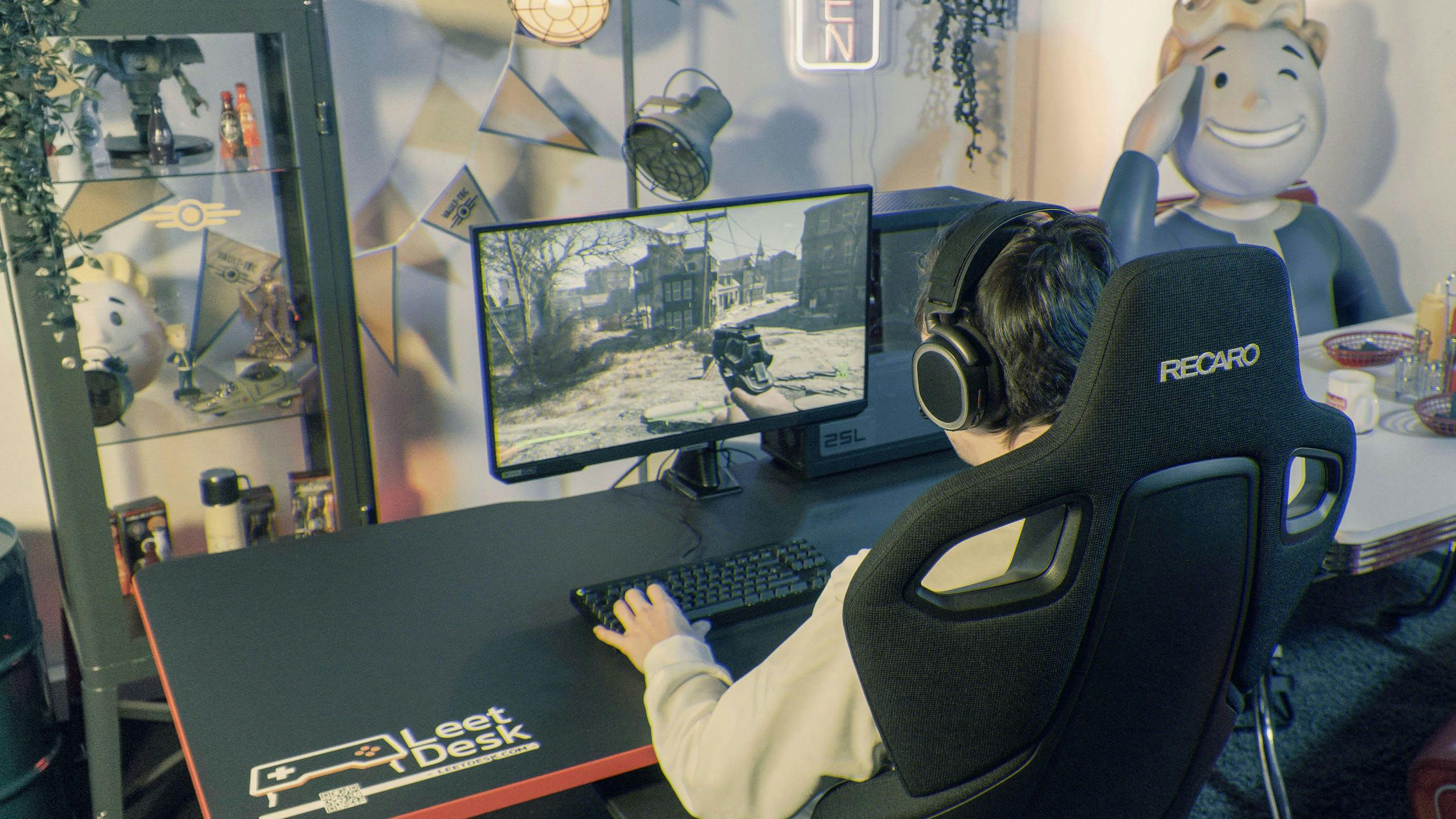Cable Management for Gaming and Home Office Setups
We'll provide you with step-by-step instructions for managing cables in your home office or gaming setup. Whether you're a seasoned pro or just starting out, these tips and tricks will help you achieve the perfect desk cable management.
Cable management in 5 steps
- Plan your cable layout: Before you start managing your cables, plan out the layout of your setup. Determine where each device will be placed and how you want to route the cables. This will help you identify the optimal cable management solutions for your specific setup.
- Sort cables by function: Start by separating the cables by the function of the devices they connect. For example, group all the power cables together, all the video cables together, and all the audio cables together. This will make it easier to identify each cable and prevent tangles.
- Use cable sleeves: Cable sleeves are a great way to keep your cables organized and out of sight. They come in a variety of colors and lengths to match your setup and can be easily cut to size.
- Route cables behind your desk: Routing cables behind your desk will keep them out of sight and prevent tangling. Use cable clips or adhesive cable mounts to secure the cables to the back of your desk.
- Consider using a cable tray or channel to keep them organized. These solutions attach to the underside of your desk and provide a designated space for your cables to run through.
Tip: Label your cables! Using label tags or markers will help you identify each cable and make it easier to manage them in the future.
Gaming Cable Management for your Setup
Gaming setups typically have more cables to manage than home office setups, due to the variety of devices involved such as monitors, gaming keyboards, gaming mice, gaming headsets, and consoles. Here are some additional tips for managing cables in your gaming setup:
- Mount a PC holder: If you own a stationary gaming PC, it could be a great idea to explore the option of mounting a PC holder underneath your desk. By doing so, you can bring the PC closer to your desk periphery and use shorter cables, resulting in a tidier setup. Shorter cables, cleaner setup - it’s that easy!
- Use wireless devices: Consider using wireless devices, such as a wireless keyboard and mouse, to eliminate the need for cords altogether. However, make sure to do proper research when selecting wireless devices for gaming. There are only a handful of models out there that are suitable for fast paced online games where input delay can decide victory or defeat.
- Deploy monitor arm(s): Incorporating a monitor arm into your setup can enhance your cable management system and provide added flexibility. With built-in cable management features, monitor arms allow you to easily guide cables away from your monitor while maintaining a sleek appearance. This can prove especially useful during intense gameplay, where you may need to pull the screen closer to you without the risk of damaging or disconnecting any cables.
Cable Management for Home Office Setups
While many of the cable management techniques we'll discuss in this article apply to both home office and gaming setups, there are some differences to keep in mind. Home office setups often require more flexibility since many people use laptops that need to be plugged in and unplugged frequently, whereas gaming setups are usually more stationary.
Using a docking station or USB hub can greatly aid in cord management and increase the flexibility of your workspace. By connecting all your peripherals, such as your keyboard, mouse, monitor, and other devices, to the docking station or hub, you can significantly reduce the number of cables that need to be plugged into your laptop. This not only creates a cleaner and more organized workspace but also makes it easier to plug and unplug your laptop without having to deal with a mess of tangled cables.
Using wireless devices is another way of eliminating the need for cords, such as a wireless keyboard and mouse. Unlike gaming setups, office work doesn't require hyper-responsive input, so there's no need to invest in expensive wireless hardware. This can save you money while providing the convenience and flexibility of a wire-free workspace.
Standing Desk Cable Management
If you use a standing desk, cable management can be a bit more challenging due to the added height and movement. Here are some tips for managing cables with an adjustable desk:
- Use a cable tray: Consider using a cable tray as an effective solution to organize your workspace cables. By installing a cable tray beneath your desk, you can allocate a dedicated space for cables to run through and neatly place power strips. This setup ensures that only one cable (from the power strip) extends from the tray to the power socket, while all other device cables remain contained within the cable tray.
- Use a cable sleeve: A cable sleeve can also be helpful for managing wires with a standing desk, as it can keep them organized and out of sight as the desk moves up and down.
- Use a power strip with a long cord: If your standing desk is located away from an electrical outlet, use a power strip with a long cord to keep all of your devices plugged in and easily accessible.
By the way: You can find out why a standing desk can be a good idea for you in our guide on gaming desks.
Cable Management Solutions
There are many different cable management solutions available on the market, ranging from basic cable ties to advanced cable management kits. Here are some options to consider:
Cable sleeves
As mentioned before, cable sleeves are a popular solution for keeping cables organized and out of sight. They can be easily cut to size and come in a variety of colors to match your setup.
Cable ties and straps
These are the simplest and most cost-effective cable management solutions. Use them to group cables together and keep them organized.
Cable clips and adhesive cable mounts
These solutions attach to the back of your desk or to the wall and provide a designated space for your cables to run through. They can help prevent tangling and keep your cables organized and out of sight.
Cable management kits
If you want a comprehensive solution for managing all of your cables, a cable management kit may be the way to go. These kits typically include cable sleeves, cable ties, cable clips, and other cable management accessories.
Cable trays
Trays are an efficient solution to manage cables under your desk. They help to keep your cables organized and tidy, which in turn makes your workspace look cleaner and more professional. By using a cable tray, you can prevent cables from becoming tangled, damaged or obstructing your legroom. Moreover, cable trays are versatile and can be used to hold other components such as power strips, adapters, and chargers. This allows you to keep all your power cables and electrical equipment in one place, making it easier to access them when necessary.
PC holder
Those can be a game-changer when it comes to cable management. By elevating your desktop computer off the ground and mounting it under your desk, you can create more space on your desktop and reduce cable clutter. This not only helps keep your workspace tidy but also makes it easier to access and manage your cables. Additionally, a PC holder can improve airflow around your computer, preventing it from overheating and reducing the risk of damage.
No matter what cable management solution you choose, make sure it's compatible with your setup and meets your specific needs. Take some time to research different options before making a purchase.
Maintaining Wire Management
Once you've implemented a cable management system, it's important to maintain it to ensure that your cables stay organized and tangle-free. Here are some tips for maintaining your cable management:
- Regularly check your cables: Take some time to check your cables periodically to make sure they're still organized and secure.
- Re-organize as needed: If you add new devices or move things around on your desk, you may need to re-organize your cables accordingly.
- Avoid overloading outlets: Overloading outlets can cause your cables to overheat and potentially cause a fire. Make sure to distribute your devices among different outlets and use surge protectors when necessary.
Conclusion
In conclusion, proper cord management is an essential aspect of any well-organized and clutter-free workspace, whether it's for gaming or a home office setup. By following some simple tips, such as planning your cable layout, sorting cables by function, and using cable sleeves or trays, you can keep your cables organized, out of sight, and tangle-free. Additionally, using wireless devices and cable management solutions like cable trays and adhesive cable mounts can further enhance your cable management system. Ultimately, by investing some time and effort into cable management, you can create a more sleek and efficient work or gaming environment.



